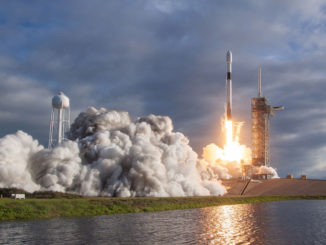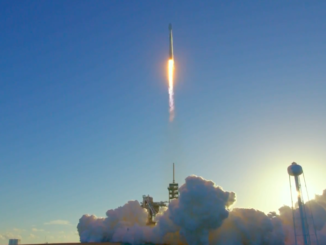
Building on a mission canceled last year, NASA is developing a mobile robot named VIPER for launch in 2022 to scout for water ice at the moon’s south pole, the same region where the agency aims to land astronauts by 2024.
The $250 million rover mission, developed by engineers and scientists at three NASA centers in California, Florida and Texas, will be delivered to the moon’s south pole by a commercial lander.
About the size of a golf cart, the Volatiles Investigating Polar Exploration Rover will traverse several miles on the lunar surface, using its four instruments to survey the polar landscape and analyze the lunar soil’s water content.
“The key to living on the moon is water – the same as here on Earth,” said Daniel Andrews, the project manager of the VIPER mission and director of engineering at NASA’s Ames Research Center in Silicon Valley. “Since the confirmation of lunar water ice ten years ago, the question now is if the moon could really contain the amount of resources we need to live off-world. This rover will help us answer the many questions we have about where the water is, and how much there is for us to use.”
NASA formally unveiled plans for the lunar south pole rover Oct. 25, soon after VIPER passed a mission-level requirements review by an independent NASA review panel, agency officials said. With the mission requirements now established, the VIPER team is gearing up for a preliminary design review next year, in preparation for launch and delivery to the lunar surface in December 2022.
“This ambitious timeline was made possible because of the previous extensive technical work done for Resource Prospector,” team members said in response to questions from Spaceflight Now.
Resource Prospector, which consisted of a NASA-developed lander and rover, was canceled last year as the agency emphasized a new commercial approach to lunar exploration. NASA selected nine companies last November to compete for contracts to deliver scientific payloads to the moon using new commercially-developed robotic landers.
The VIPER rover will ride to the moon on a privately-owned lander procured through the Commercial Lunar Payload Services, or CLPS, program, NASA said.
The rover will be about the size of a golf cart and weigh around 770 pounds (350 kilograms), officials said.

During a 100-day mission, VIPER will scout the same region targeted for a human landing in 2024 by NASA’s Artemis program.
“NASA’s priority for VIPER will be a region that contains a range of terrains that offer differing temperatures and light conditions in order to fully understand the nature of the water and volatiles therein,” the VIPER team wrote in a response to emailed questions. “The landing locations for the human landers have different specifications, driven by the specific needs of the human mission.”
In March, Vice President Mike Pence challenged NASA to land the first woman and the next man at the moon’s south pole by the end of 2024. Since then, the agency has fast-tracked development of new human-rated landers to accomplish a human return to the moon’s surface within five years.
NASA plans to select up to four companies late this year or in early 2020 to begin development of a human-rated lander. Late next year, NASA intends to choose two of the companies to proceed into full-scale development for landing missions in 2024 and 2025.
But that schedule assumes Congress allocates funding to cover the multibillion-dollar cost of accelerating the lunar program from its previous targeted landing date in 2018.
Under NASA’s current planning, the agency’s Space Launch System and Orion crew capsule will launch on an unpiloted test flight in 2021, followed by a mission around the moon on the next SLS/Orion mission. Astronauts on the third SLS/Orion mission, designated Artemis 3, would attempt to land on the moon after rendezvousing with a lander already launched into lunar orbit by a commercial rocket.
Scientists discovered evidence of water ice bound in soil at the moon’s poles using a NASA-funded instrument on India’s Chandrayaan spacecraft, which operated in lunar orbit from November 2008 through August 2009.

Credit: NASA
NASA crashed a satellite and a spent Centaur rocket stage into a crater near the south pole in 2009. Data gathered by that mission found the lunar materials excavated by the impacts contained water, providing scientists with another data point to confirm the presence of ice at the moon’s polar regions.
Water ice on the moon could be tapped by future missions to generate rocket propellant, breathing air and other resources.
“It’s incredibly exciting to have a rover going to the new and unique environment of the south pole to discover where exactly we can harvest that water,” said Anthony Colaprete, VIPER’s project scientist at NASA’s Ames Research Center, which is leading the VIPER mission. “VIPER will tell us which locations have the highest concentrations and how deep below the surface to go to get access to water.”
VIPER will carry a neutron spectrometer to sense the presence of water below the lunar surface, and a drill provided by Honeybee Robotics will collect samples from a depth of up to a meter, or more than 3 feet, for analysis by on-board instruments.
Email the author.
Follow Stephen Clark on Twitter: @StephenClark1.



